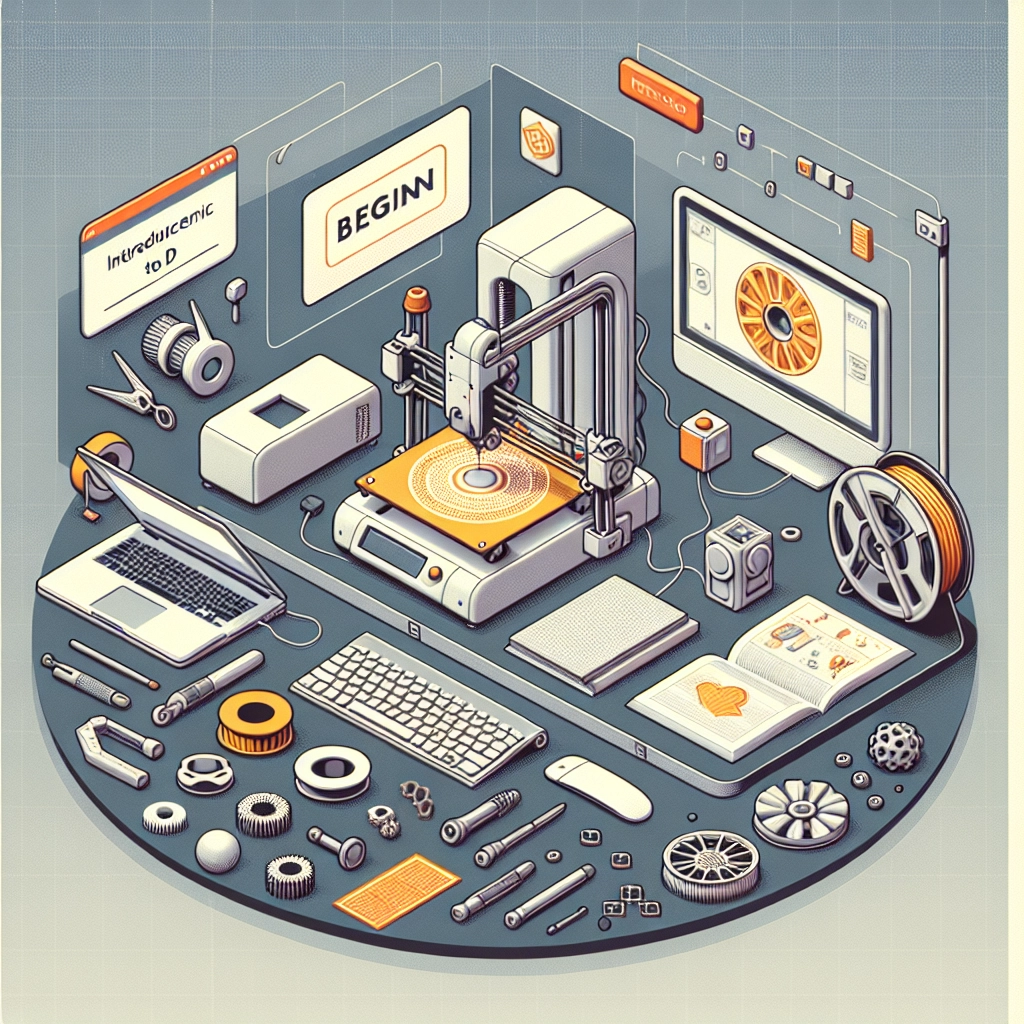3D Printing Basics: What You Need to Know Before Getting Started
Have you ever daydreamed about crafting custom objects right from the comfort of your home? Perhaps a unique phone case, a model of your favorite character, or even a piece of furniture? Enter the world of 3D printing—a technology that’s transformed the way both hobbyists and professionals create and share their designs. If you’re intrigued and thinking about diving into this exciting realm, there are a few basics you should know to set you up for success.
What is 3D Printing?
At its core, 3D printing—or additive manufacturing—is the process of creating three-dimensional objects from a digital file. The printer lays down successive layers of material (like plastic, resin, or even metal), building the object layer by layer until it’s complete. It’s like creating an object using a high-tech hot glue gun, where each layer is carefully forged to adhere to the previous one.
Different Types of 3D Printers
Before you decide to invest in a 3D printer, it’s crucial to understand the different technologies available. Here are the most common types you’ll encounter:
-
Fused Deposition Modeling (FDM): This is perhaps the most popular and accessible type of 3D printing. FDM printers work by melting thermoplastic filament and extruding it in layers. They’re great for beginners and are known for being relatively affordable.
-
Stereolithography (SLA): SLA printers use a UV light to cure resin into hardened plastic. They tend to produce highly detailed objects and are favored for projects requiring precision, such as intricate models or jewelry. However, they may require more post-processing work and can be pricier than FDM printers.
-
Selective Laser Sintering (SLS): SLS is mainly used in high-end applications. This technique employs a laser to fuse powdered material (often nylon) into dense layers. With no need for support structures, SLS can produce complex geometries, making it a favorite among professionals.
Choosing the right printer depends on what you want to create and how much you’re willing to spend.
Materials Matter
Next, let’s talk about the materials. The type of material you choose will greatly impact the quality, durability, and purpose of your finished product. Here are a few common options:
-
PLA (Polylactic Acid): This biodegradable plastic is user-friendly, low-cost, and perfect for beginners. It’s not the strongest material, but it works wonderfully for prototyping and basic models.
-
ABS (Acrylonitrile Butadiene Styrene): Known for its strength and durability, ABS is often used for functional parts. However, it can be trickier to print due to warping and requires good ventilation as it emits fumes during printing.
-
PETG (Polyethylene Terephthalate Glycol): This is a fantastic middle ground between PLA and ABS. It’s stronger than PLA and easier to print than ABS, making it a favorite for various applications.
Keep your projects and your printer’s capabilities in mind when choosing materials!
Design Software
Getting started with 3D printing often involves some design work. Thankfully, there’s a variety of software available, catering to everyone from beginners to seasoned pros. Here are a couple of popular options:
-
Tinkercad: A fantastic entry-level tool, Tinkercad is browser-based and extremely user-friendly. It lets you create 3D designs using simple geometric shapes, perfect for novices.
-
Fusion 360: This more advanced software is excellent for designing complex parts and assemblies. It may have a steeper learning curve, but it comes packed with powerful features.
If you don’t feel like designing from scratch, there’s a vast library of pre-made 3D models available online. Websites like Thingiverse and MyMiniFactory offer countless files ready for you to download and print!
Community and Learning Resources
Don’t underestimate the power of the 3D printing community. Whether you’re troubleshooting a technical issue or seeking inspiration, online forums and social media groups are invaluable. Websites like Reddit or dedicated Facebook groups often have vibrant communities where you can seek advice, share your creations, and learn tips and tricks from seasoned printers.
Getting Started
Now that you have a clearer understanding of 3D printing basics, you’re ready to take the plunge! Start small—consider buying a beginner-friendly FDM printer, experiment with different materials, and dive into the delightful world of design. The journey might come with its challenges, but the satisfaction of creating something uniquely yours is unparalleled. Just remember, every expert was once a beginner, so don’t be afraid to embrace the learning curve!
With creativity at your fingertips and the potential to bring almost anything to life, the 3D printing adventure awaits. Happy printing!

